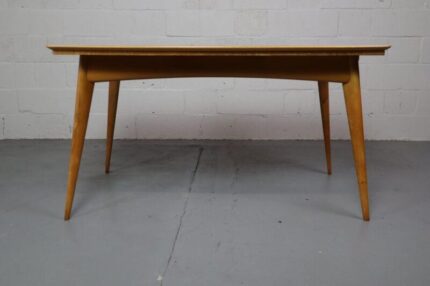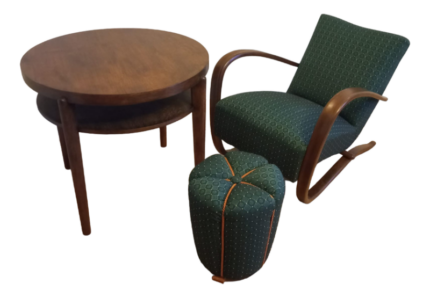Black Forest Breinzware Large Inkwell, carved as begging terrier with tongue protruding, with inset glass eyes, the hinged head concealing a glass inkwell, the dogs front paws mounted on a naturalistically carved hollowed tree forming the pen tray, Brienz, Switzerland ca. 1880. An exceptionally well-carved piece.
BOOK REFERENCES:
Peter F. Blackman, BLACK FOREST WOOD CARVINGS: THE HISTORY OF SWISS BRIENZERWARE. Atglen, PA: Schiffer Publishing, Ltd, 2009, p. 276.
*Jay Areneski, Simon Daniels and Michael Daniels, SWISS CARVING: THE ART OF THE ‘BLACK FOREST:’ 1820-1940, Suffolk, UK: Antique Collectors’ Club, Publishers, 2005, pp. 13-14.
Jay Arenski, et al, quotes Swiss Poet Heinrich Federer, who said in his memoirs, “Woodcarving brought riches to the village [of Brienz]. It became all the fashion and no Englishman left the Bernese Highlands without having seen the Giessbach, having eaten a fat roasted eel, and having bought a Brienz woodcarving.” Arenski continues, “Thus, as the tourist industry flourished and thrived, so did the carvers, selling their wares to the well-heeled visitors.”
This fashion had been set in motion by Queen Victoria’s visit to the area in April 1868, and by her subsequent inspiration to build a Swiss chalet at Osborne House and fill it with Black Forest Swiss carvings (see footnote).
BOOK REFERENCES:
Peter F. Blackman, BLACK FOREST WOOD CARVINGS: THE HISTORY OF SWISS BRIENZERWARE. Atglen, PA: Schiffer Publishing, Ltd, 2009, p. 276.
*Jay Areneski, Simon Daniels and Michael Daniels, SWISS CARVING: THE ART OF THE ‘BLACK FOREST:’ 1820-1940, Suffolk, UK: Antique Collectors’ Club, Publishers, 2005, pp. 13-14.
Jay Arenski, et al, quotes Swiss Poet Heinrich Federer, who said in his memoirs, “Woodcarving brought riches to the village [of Brienz]. It became all the fashion and no Englishman left the Bernese Highlands without having seen the Giessbach, having eaten a fat roasted eel, and having bought a Brienz woodcarving.” Arenski continues, “Thus, as the tourist industry flourished and thrived, so did the carvers, selling their wares to the well-heeled visitors.”
This fashion had been set in motion by Queen Victoria’s visit to the area in April 1868, and by her subsequent inspiration to build a Swiss chalet at Osborne House and fill it with Black Forest Swiss carvings (see footnote).
-
Dimensions:Height: 6 in (15.24 cm)Width: 10 in (25.4 cm)Depth: 6.5 in (16.51 cm)
-
Style:Black Forest(Of the Period)
-
Materials and Techniques:SoftwoodHand-Carved
-
Place of Origin:Switzerland
-
Period:1880-1889
-
Date of Manufacture:1880
-
Condition:GoodWear consistent with age and use. In Excellent Antique Condition.
-
Seller Location:Banner Elk, NC
-
Reference Number:Seller: BA9yy-YNETSeller: LU1302231434612
Reviews (0)



































Reviews
There are no reviews yet.